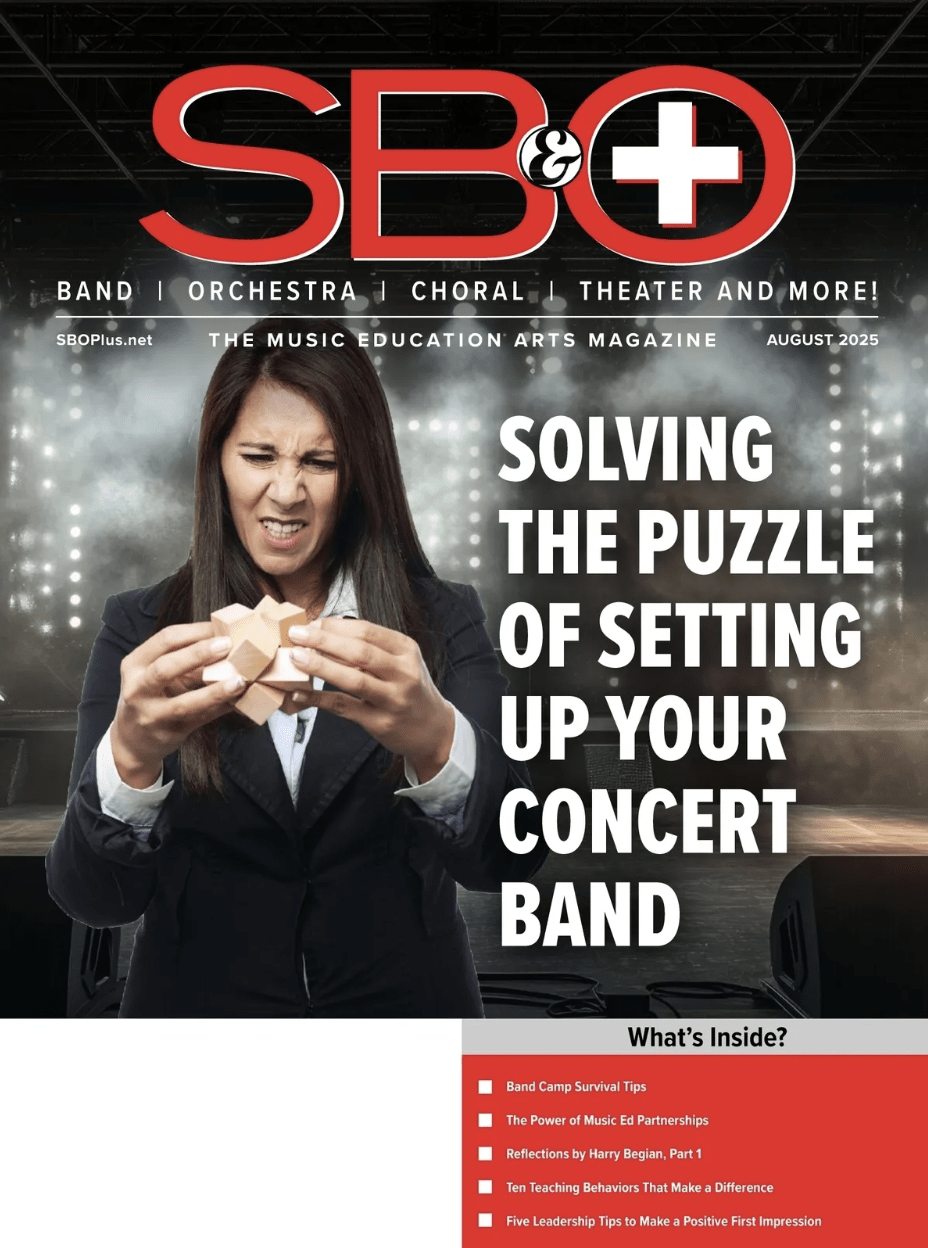1. Burton Grip
Mastering the Burton Grip should be one of the main priorities for your students.
The mallets are controlled by the thumb and index finger and the mallets are crossed. This inside mallet should be anchored down with the fourth finger in the palm. When playing linear lines, the student should hold the right-hand mallets at a 90-degree angle, with the outside mallet playing the passage. The right-hand wrist stroke motion is similar to ‘waving goodbye’. The left-hand mallets should be at a 45-degree angle, and the inner mallets plays the passage. The motion for the left hand is a wrist turn, similar to turning a door knob.
2. Learn Vibe Solos
Before your vibe student enters an ensemble, it will be great for your them to discover his or her style and hone their craft. Have the student get a book with a collection of solos and learn a bunch of them. This will make them more comfortable on the instrument before joining a jazz ensemble.
3. Motor Control
The vibe motor is generally used as an effect. It is also mostly used in jazz ballads. Turning the motor up or down will increase or decrease the speed. Your student should choose a speed that compliments the tempo of the song. A very slow and lush ballad would call for a legato and slow motor vibrato and an ‘up tempo’ song would call for an increased speed. Teach your student to trust his or her artistic judgement. The speed of the motor should fit the mood and emotional communication of the song.
4. Dampening Techniques
Teaching your students to dampen on vibes is an art form in itself. Dampening occurs when you play a note with the right or left hand, and the mallet from the other hand dampens the note. This technique can be challenging at first, but once they get the coordination down the students can play beautiful legato passages.
5. Pedaling Technique
Using the pedal is a very important part of your student’s vibe performance. The pedal controls how long each note will ring. It is always good to keep a slight amount of weight on the pedal so they get a nice and full tone from every bar that is struck. Typically, pedaling is done when chords change in a progression so the notes of subsequent chords do not ring together. But sometimes, this is exactly the effect that a performer wants, if there are two chords with a lot of common tones and the passage is extremely legato. Pedaling to the music is the key to success. The style of the music and the speed and content of the chord progressions will dictate pedaling.
6. Comping
Have your student learn all inversions of a chord. Play through isolated II-V7-I progressions in all 12 keys. Always remember that the top note of the chord will be heard the most, so the voicings should be chosen to where the top note compliments the melody. Your student should always think melodically when comping, but rhythmic aspects of the comping are just as important as melodic. Use syncopation and avoid downbeats. Remember that silence can be very important.
7. Know Your Role
As a vibe player, it is always important for the student to know his or her role in the ensemble during any given song. Sometimes the vibes will be comping in the background like a piano. Other time the vibes will be soloing. There will also be moments when the vibe player is doubling the melody, or harmonizing. Develop your students’ instincts so they know when to blend in with the ensemble, and when to play out. If the vibe player is comping along with a pianist, make sure it is done in a way to where there is no interference and confusion. All comping in an ensemble should be rhythmically cohesive.
8. Improvising
This is one of the most difficult aspects of performance to teach your students. Always tell them to start by using their ears and play what they are hearing. It will be much easier if the student has a rhythmic, melodic, and harmonic foundation to build from. Improvising is like learning a language. Until the student learns the ‘vocabulary’, it will be difficult for them. Start with the basics. A great platform to start from is the student learning all of his or her blues scales.
A question and answer performance rehearsal where the teacher plays a short passage, and the students play it back, is a great way to teach improvisation. Students will only get better by doing it.
9. Be Versatile
One of the greatest lessons I learned as a vibe player is that not every song has a vibe part, and vibes don’t always fit the song. Learning techniques on Latin instruments such as claves, castanets, wood blocks, cabassa, and countless other Latin instruments will help the vibe player contribute to the jazz ensemble as a percussionist when vibes aren’t called for in the score. Learning conga and hand drum technique and rhythms can be very regarding as well.
10. Know Your Style
Research the style of the song to make sure it is played authentically. Different eras of jazz call for different types of harmonic vocabulary. There are also certain rhythmic elements that fit certain styles, such as the bossa nova. Determine which nova style era of the music comes from and then identify the style of the song.
In 2016, The Huffington Post called Kevin Lucas “the most talented percussionist since Lionel Hampton, Ginger Baker, and Tito Puente.” He has been nominated for 38 music industry awards for his Echoes in the Sand album, and he won the 2016 American Songwriting Awards.




























